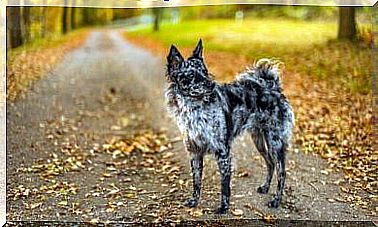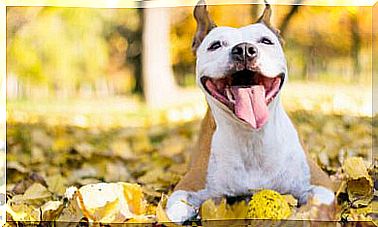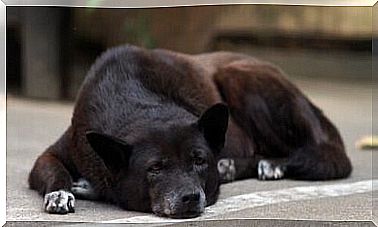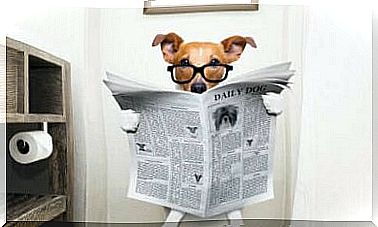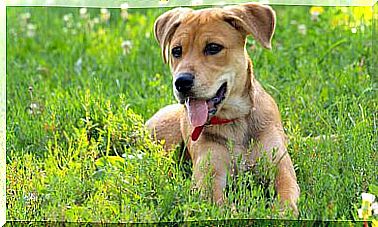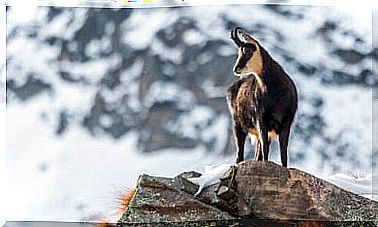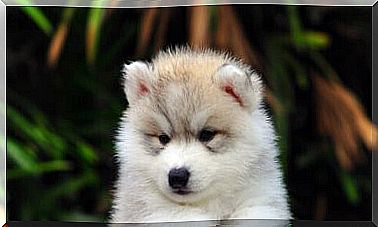Characteristics Of The Czech Hunting Griffon
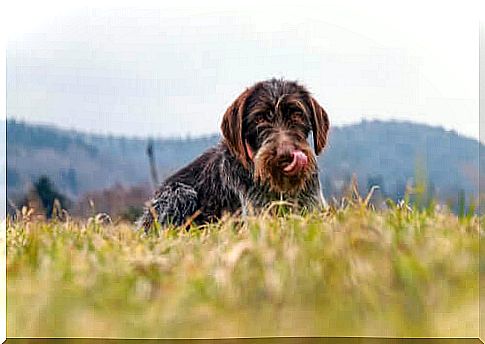
The Czech hunting griffon is also known as Cesky Fousek or Czech hunting griffon. This is a breed of loyal and friendly dogs that have been nicknamed the ‘supreme hunting dogs’. Thus, the Czech hunting griffon is a highly prized breed.
It hails from the former principality of Bohemia in the present-day Czech Republic, although most people think this is a French breed. References to Bohemian hunting dogs, generally understood to be ancestors of the Fousek, can be found in documents dating back to the 14th century.
The political turmoil of the early 20th century was particularly violent in Eastern Europe. For Cesky Fousek, this was almost fatal. As the war unfolded across the region, the breeding of this breed came to a standstill.
By the end of the war, in 1918, the Austro-Hungarian Empire had ceased to exist and a new nation, Czechoslovakia, had been proclaimed. But Fousek was almost extinct.
There are few examples of this breed today, but it is adored for its excellent qualities. Her fidelity and versatility make her even more worthy of being loved.
This breed became immensely popular in France: people loved the muzzle of this dog and its characteristic of being a very cautious hunter.
In 1887, the Czech hunting griffon was considered a standard and stable breed. The following year, in England, face-to-face classes were organized for the dog.
It was inevitable that this lovely breed would become popular. However, its popularity declined during World War II. Luckily for pet owners and hunters, demand for the Czech hunting griffon recovered immediately after the war.

Czech hunting griffon features
The most characteristic feature of the Czech hunting griffon, without a doubt, is its goatee.
His body is slightly large and not too tall, and he can adapt to almost any type of terrain . Its strength and endurance are its most striking features.
Its coarse but never curly coat was bred to work in any terrain. It usually has a medium gray outer layer, long and straight, with brown spots.
On the other hand, the inner layer is thick, soft and thin. This provides protection in marshy places and even protects you from the cold. This breed moves very quickly and efficiently.
personality and temperament
The Czech hunting griffon is a versatile animal that is friendly as a pet and ferocious as a hunting dog.
As a family pet, he is extremely loyal, friendly, always willing to please, fun and loving. He also behaves well with other pets, dogs and even strangers.
The Czech hunting griffon also has several abilities that make it very popular. It is a good field dog, specialist in recovering and aiming, as it has excellent hunting qualities in forests and swamps.
Furthermore, it follows the hunter’s instructions but, at the same time, acts independently.
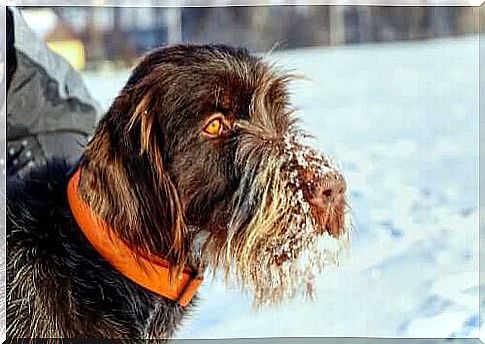
This dog also hunts rats and mice at home. It is worth noting that the Czech hunting griffon needs firm training and is not suitable for living in limited environments, as it needs large spaces and lots of exercise.
Czech hunting griffon health and care
This breed loves all kinds of exercise, like running and playing. The Czech hunting griffon needs a daily exercise routine to expend energy.
To avoid ear problems, the Czech hunting griffon’s ears should be kept clean. To preserve your health, hairs in the ear canal area should be trimmed regularly.
You should brush Czech hunting griffon fur once or even twice a week. Also, it is essential to remove dead hair at least twice a year.
This breed can live outdoors as long as it has a warm shelter. In general, this dog has a life expectancy of 12 to 14 years, and rarely suffers from any serious illness.
However, he may have minor health problems such as canine hip dysplasia, otitis externa, ectropion and entropion. To identify these problems at an early stage, your veterinarian may recommend examinations of the dog’s hip and eyes.

